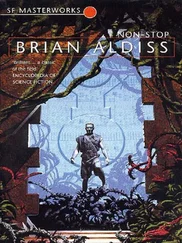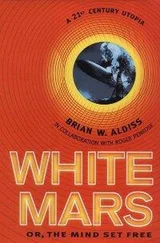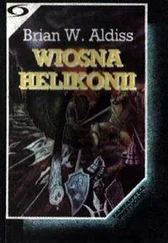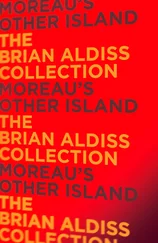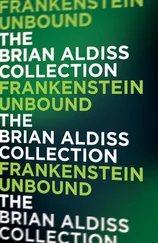At twenty minutes to three, he rose, closing his book. His appointment with his superior at the WACH offices was at three o’clock. He took a lift to the ground floor and left the Schäfer, passing under the marble bust of Amanda Schäfer, where two lines of her poetry were incised in Carrera marble:
Lass das Tal der Finsternesse,
tritt in meinen Lichtkreis ein
It was no more than a brief stroll along a grass-fringed sidewalk to the building which housed the WACH offices. The block was situated behind the brown mass of the Xerox block, built to resemble a child’s interpretation of Viollet-le-Duc’s reconstruction of Carcassonne. All the blocks here, because they had no real context, were architectural abnormalities – to Burnell’s mind, the degenerate opposite of the structures that it was his duty to protect.
Walking here once with Burnell, a visiting friend had looked about him in dismay and exclaimed, ‘God had his reasons.’ But God remained unobtrusive in Sossenheim, unwilling to intrude on an elaborate organization.
Sossenheim City, its civic designation, was an aggregation within an all-embracing FAM, a grave accent stretching north-west from what remained of the Niederwald. Sossenheim was too big to be called a business park. It consisted of offices, shopping malls, urbstaks, hotels, apartment blocks, Bienenhäuser, parklets, autostaks, conference centres. These units might be expressed as three million square metres of offices, two million square metres of living accommodation, point nine million square metres of retailing, and point six million square metres of automobile parking. The population of Soss City was two point two million by day and point nine eight by night. Potted plants, point four million, static. Many official bodies – such as WACH, to name one of the poorest of them – had offices in Soss City.
Soss City possessed no centre, no spot where citizens might gather, should they be seized by such an aberrant desire. Of the old village, a community where once men gathered in the bars of the crooked streets, to discuss the relative merits of Eintracht Frankfurt versus Bayern München, and beat up their wives discreetly on returning home, nothing remained: the exception being a row of two-storey brick houses in Mombacher Platz. These had somehow escaped bombs in World War II and later the demolition gangs, and now formed part of a History Theme Park. The new city was divided, though in no systematic way, into national sectors. Giant Bienenhäuser or ‘beehives’ contained citizens of the member nations of the EU. In other hives lived Japanese, Korean, Malaysian, Californian, American, Arab, South African populations, and so on. All these hives, although basically engaged on international business, cleaved to their national idiosyncrasies, their national cooking – diversified in many cases by integral Indonesian and Chinese restaurants.
National diversity compensated slightly for ethnographic oddity. Everyone in Soss City was middle-class, aged between about sixteen and fifty-five. Retiring drones had to take themselves off elsewhere. Children were herded and not seen.
On his brief walk, Burnell passed not a single advertisement, such as enlivened the centre of cities everywhere. Nor did he pass another human being. Only armoured security vans prowled by.
The daily tidal flow of habitation was serviced by monorails, high-speed coaches, U-bahns and S-bahns. Most early traffic surged into the various centres of FAM, fish into a crocodile’s maw. The attraction of Sossenheim was that it offered safety without the necessity of neighbourliness. Burnell had always liked that; it mattered to no one whether or not he was around; he could come and go as he pleased. Also, none of the crime rampant throughtout much of the Western world affected Soss City. High-income residents invested in the best security systems.
Soss City needed no central meeting-place; the traditional square had disappeared beneath the power of indoor electronics. But in the gaudy Ginza Mall – where you showed an ID to enter – clowns and high-wire acts entertained punters every day, fountains splashed, bands played (strong on Mozart and Miles Davis), and two live white tigers were fed one live black pig every day prompt at noon, inside the Adventure Cathedral.
Organic cities of an older order are never completed, always in process, like the individuals who work and play in them. Sossenheim City was complete. A package deal.
It was no secret to Burnell that Soss City was a dull place, and that the Amanda Schäfer was a dull building. He did not mind. Dullness was good plain fare, like bread. For much of his time he was elsewhere. On the roof of the hive were various gymnasia and a large enclosed swimming pool, fringed with palms and the Copacabana Snackeria, where you could drink coconut milk or the Düsseldorf beer with the nostalgic name, Belsenbräu. A few expensive shops graced the mezzanine floor, a Pâtisserie, a jeweller, an Apotheke. On the lower ground floor was a theatre which showed films every day and staged a live show once a week, when lean lightly clad transvestites cavorted for fat men in business suits. Entry to ‘The Pink Pussycat’ was free to those who showed their Schäfer ID.
A higher culture was preserved, if only as an echo of the past. The Amanda Schäfer was itself named after a German writer of the region, whose slender book of poems, Zeichen am Wege, had acquired cult status. On every floor were EMV cubicles; the system was due to invade individual apartments shortly, as its popularity grew. TV was increasingly given over to amateurism; anyone with a camcorder could secure a viewing. That was democracy. TV’s feeblest jokes were greeted with rapturous applause by studio audiences. But nothing by way of a living art form actually took place in, or was inspired by, the Amanda Schäfer.
The fragmentation afflicting Western society from the 1980s onwards found its embodiment in edge cities like Sossenheim. Among a vast crowd of demographically separate people, it was easy to be alone.
Even within the WACH offices, a sense of isolation prevailed. Burnell was aware of it as a secretary showed him into a small conference room. The air-conditioning reduced voices to a whisper. The very word ‘culture’, so vague and threatening, had a deadening effect.
Burnell’s superior, Karl Leberecht, rose from his desk, rushed round it, and embraced Burnell, clapping him on the back. As usual, Leberecht was immaculately dressed, sporting a carnation in the buttonhole of his pinstripe suit. Rumour had it that he beat his large Scandinavian wife.
He sat Burnell down, ordered coffee, sent his equally immaculate secretary out of the room, and insisted on hearing all Burnell’s troubles. Putting his feet up, leaning back, and gazing at a bust of Eugene Ionesco was Leberecht’s way of concentrating. He did not speak until Burnell had finished.
In his sympathetic fashion, Leberecht brushed to one side the whole business of Stephanie and any other affairs of the heart (as he phrased it) which might be contained in the erotic EMV bullet. Burnell was still a young man and would have plenty of time to accumulate more memories of beautiful women. Having said which, he laughed heartily; Burnell joined in in doleful fashion. The two men had often gone out on the town together.
What worried Leberecht – and at this point he struggled up and put his feet in their polished shoes firmly on the carpet – was that all Burnell’s professional knowledge should be so easily available on the second bullet. He felt strongly that knowledge should be accessible only to those who were prepared to work for it – ‘like good fortune’, he said. Knowledge should not be purchased in the street, like ice cream or the services of a prostitute. He promised he would do all he could through WACH channels to track down the offending bullets and have them destroyed. Meanwhile, he offered Burnell indefinite leave.
Читать дальше


